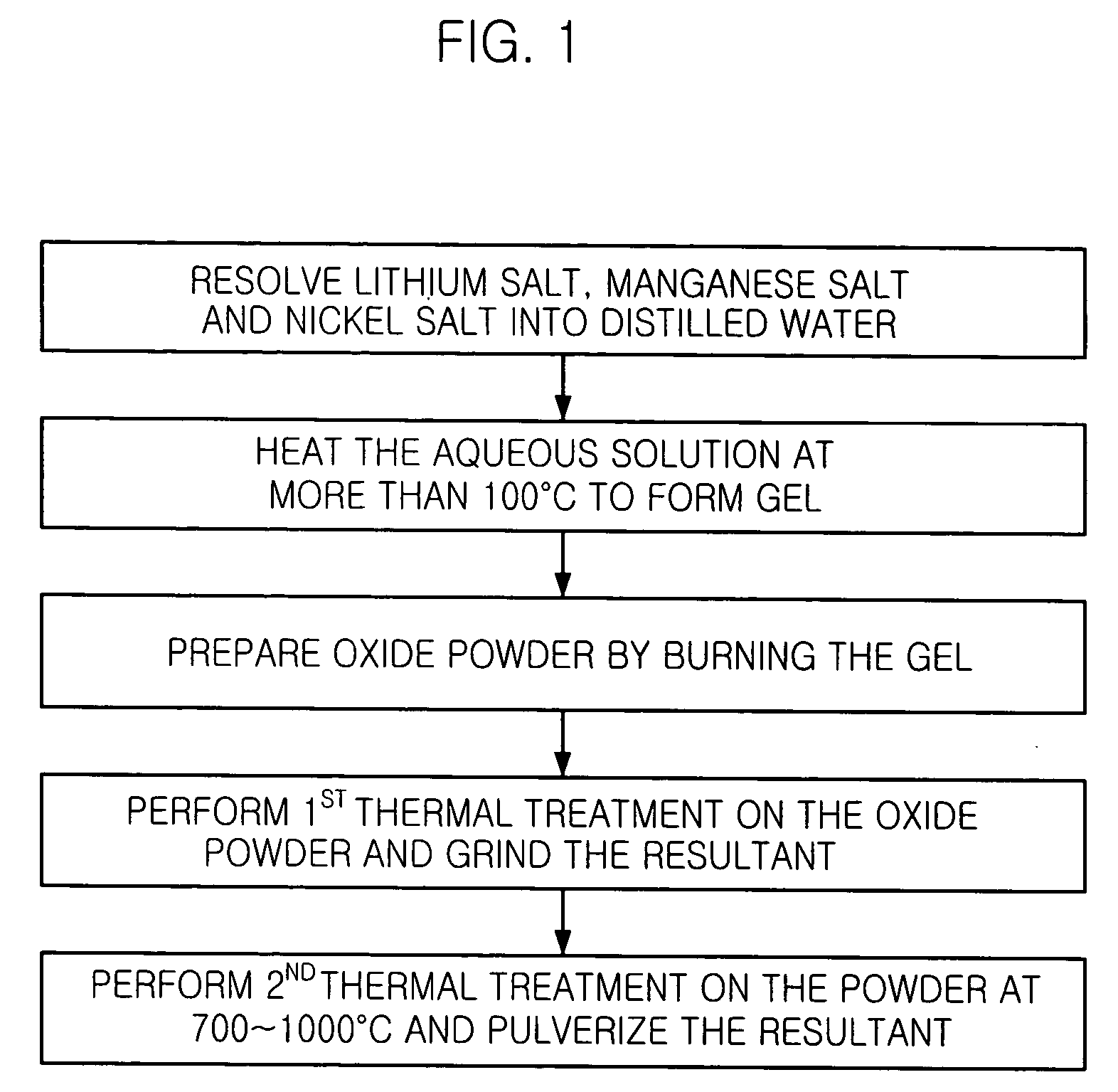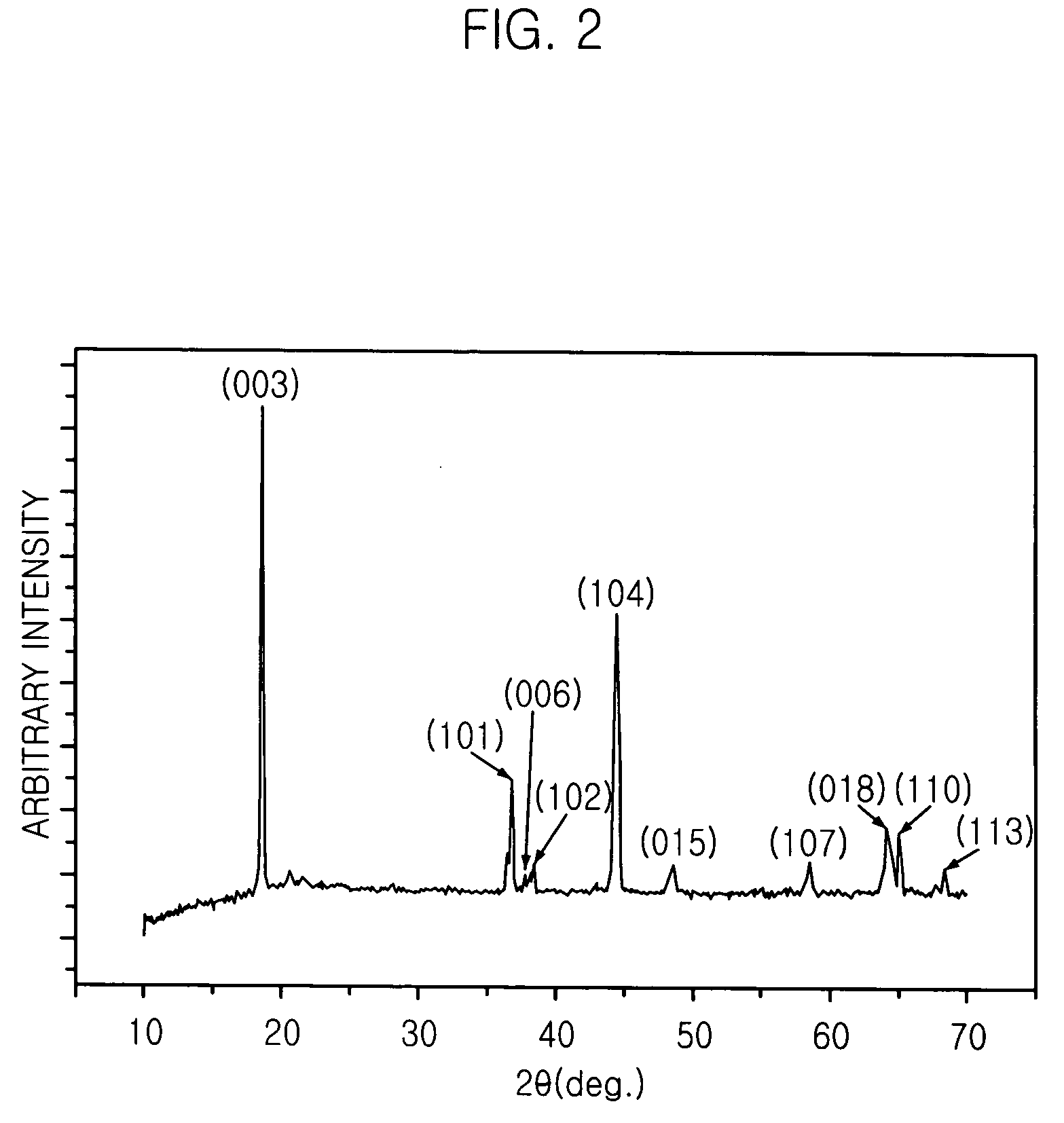Method for preparing Li-Mn-Ni oxide for lithium secondary battery
a lithium secondary battery and limnni oxide technology, applied in the direction of nickel compounds, manganates/permanentates, cell components, etc., can solve the problems of affecting the stability of the battery, affecting the performance of the battery, and rarely applying to the battery
- Summary
- Abstract
- Description
- Claims
- Application Information
AI Technical Summary
Problems solved by technology
Method used
Image
Examples
embodiment 2
[0032] 10.20 g of lithium acetate dihydrate (CH.sub.3CO.sub.2Li.2H.sub.2O)-, 12.25 g of manganese acetate tetrahydrate ((CH.sub.3CO.sub.2).sub.2Mn.4H-.sub.2O), and 8.72 g of nickel (II) nitrate hexahydrate (Ni(NO.sub.3).sub.2.6H.sub.2O) are resolved into 100 ml of distilled water.
[0033] The aqueous solution is heated at 300.degree. C. until the water is evaporated and highly cohesive green gel is obtained. The gel is burnt at 450.degree. C. to remove the remaining water, and the swollen gel is ground to obtain fine oxide powder. The oxide powder goes through a first thermal treatment at 500.degree. C. for three hours and ground. The powder is divided into three portions and a second thermal treatment is performed on the three portions of powder at different temperatures of 700.degree. C., 900.degree. C. and 1000.degree. C. for three hours, respectively, and ground. Then, the efficiencies of the three portions of Li--Mn--Ni oxide prepared by different heating temperature of the secon...
PUM
| Property | Measurement | Unit |
|---|---|---|
| temperature | aaaaa | aaaaa |
| temperature | aaaaa | aaaaa |
| temperatures | aaaaa | aaaaa |
Abstract
Description
Claims
Application Information
 Login to View More
Login to View More - R&D
- Intellectual Property
- Life Sciences
- Materials
- Tech Scout
- Unparalleled Data Quality
- Higher Quality Content
- 60% Fewer Hallucinations
Browse by: Latest US Patents, China's latest patents, Technical Efficacy Thesaurus, Application Domain, Technology Topic, Popular Technical Reports.
© 2025 PatSnap. All rights reserved.Legal|Privacy policy|Modern Slavery Act Transparency Statement|Sitemap|About US| Contact US: help@patsnap.com



